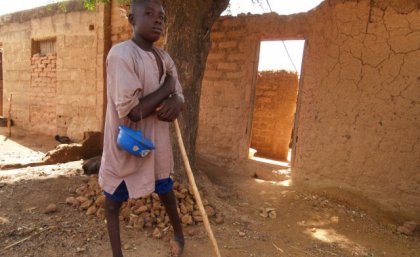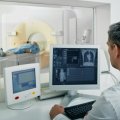
Vaccine technology being developed at The University of Queensland could hold the key to completely eradicating polio by removing live virus from the vaccine production process.
A polio inoculation in use since the 1950s has all-but eradicated the crippling disease in the developed world, but “wild polio” strains are running rampant in some poorer countries.
The World Health Organisation has described the current polio situation in developing countries is an “emergency”.
Researcher Dr Natalie Connors visited the WHO in Geneva last month to brief researchers on the “modular virus-like particles” her team is developing at UQ’s Australian Institute for Bioengineering and Nanotechnology.
“These particles resemble viruses but they are not infectious and only use the safe part of the virus,” Dr Connors said.
“They are made by producing protein, not the virus. However, being a good mimic of the infectious virus, they raise an excellent immune response.”
Dr Connors uses computational modelling and simulation to predict the best design of virus-like particles to obtain the optimal immune response.
“There is no cure for polio. It can only be prevented,” she said.
“This is why polio vaccination is so important, and why developing a polio virus-like particle vaccine would be the final step for eradication.
“The current live-attenuated polio vaccines, taken orally, can lead to circulation of vaccine-derived strains of polio-causing infection.
“Polio virus-like particle vaccines will be important for the post-eradication era, to maintain protection across the world without live virus production.”
Dr Connors’ research includes modelling the bioengineering of virus-like particles as a vaccine technology to fight other infectious and chronic diseases, including influenza and rotavirus.
“This work will lead to a range of safer and more effective vaccines,” she said.
Dr Connors is a Postdoctoral Research Follow at AIBN working with UQ’s Acting Deputy Vice-Chancellor (Research) and Vice-President (Research) Professor Anton Middelberg and Protein Expression Facility Director Dr Linda Lua.
“Visiting the World Health Organisation was a great opportunity for Natalie, and her work is playing an important part in addressing a global health emergency,” Professor Middelberg said.
“We are confident research into virus-like particles done by Dr Connors and others at UQ will help the World Health Organisation develop a new-generation vaccine for polio.”
Dr Connors was one of the Young Researchers Driving Change at the G20 Brisbane Global Café Youth Forum yesterday (Wednesday 12 November) ahead of the G20 Leaders' Summit.
Watch the UQ video New weapons in war on polio.
World Polio Week 2014 recognised the progress made towards the global eradication of polio. This year, South East Asia was certified as polio-free for the first time.
Media: Ruth Neale, AIBN, +61 7 3346 3965, r.neale1@uq.edu.au
.jpg)











